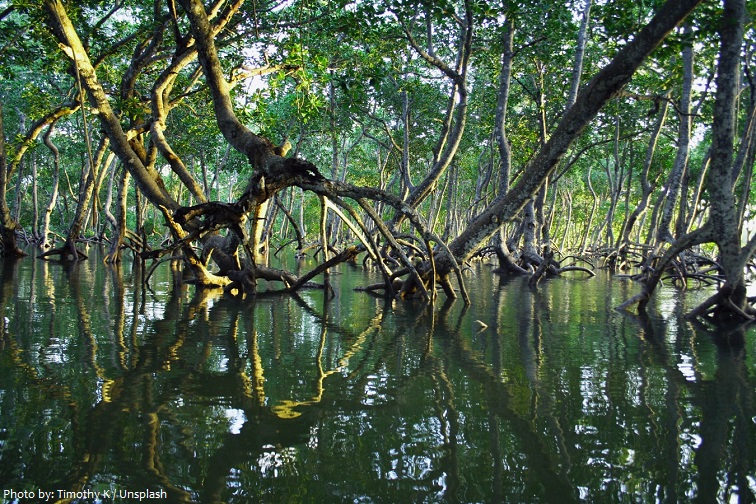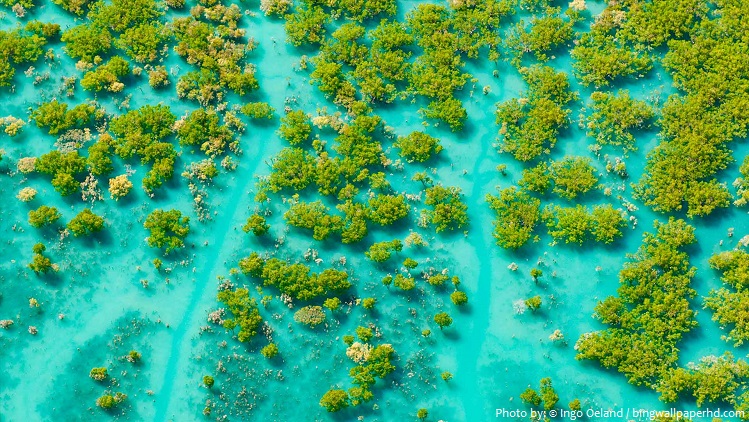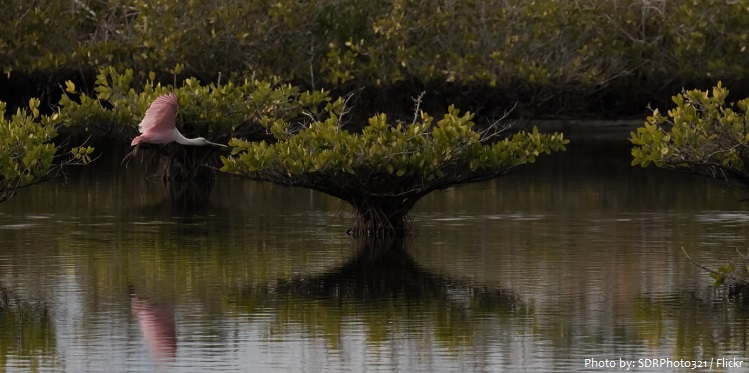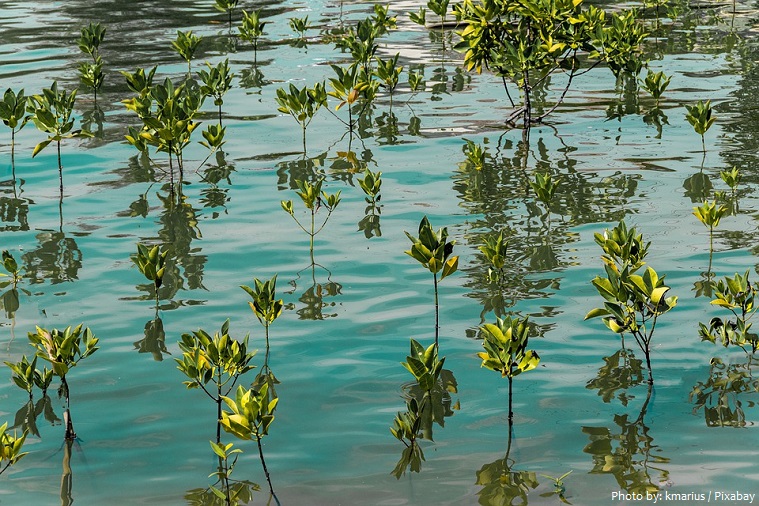A mangrove is a shrub or small tree that grows in coastal saline or brackish water.
There are about 110 mangrove species.
Botanists believe that mangroves originated in Southeast Asia, but ocean currents have since dispersed them to India, Africa, Australia, and the Americas.
Mangroves are remarkably tough. Most live on muddy soil, but some also grow on sand, peat, and coral rock. They live in water up to 100 times saltier than most other plants can tolerate.
Like seagrasses, mangroves are flowering plants, but unlike seagrasses, most of the plant lives above water.
The upper trunk and all of the branches and leaves of a mangrove tree live completely above the water line, while the lower trunk and the very large system of aboveground roots are often covered by seawater.
Mangroves range in size from small bushes to the 65-meter (213-foot) giants found in Ecuador.
They make a special saltwater woodland or shrubland habitat, called a mangrove swamp, mangrove forest, mangrove or mangal.
Mangroves occur worldwide in the tropics and subtropics.
The total mangrove forest area of the world is about 138,000 square kilometres (53,300 square miles), spanning 118 countries and territories.
Approximately 75 percent of the world’s mangrove forests are found in just 15 countries. Indonesia, a country of 17,000 tropical islands, has by far the largest mangrove forest cover, followed by Brazil, Malaysia, Papua New Guinea and Australia.
Mangroves grow in areas with minimal wave action, high salinity , and low soil oxygen.
All of the trees and shrubs form pure stands and have adapted to the harsh environment in which they grow.
Mangroves are extremely important to the coastal ecosystems they inhabit:
• Physically, they serve as a buffer between marine and terrestrial communities and protect shorelines from damaging winds, waves, and floods. Mangrove thickets improve water quality by filtering pollutants and trapping sediments from the land, and they reduce coastal erosion.
• Ecologically, they provide habitat for a diverse array of terrestrial organisms, and many species of coastal and offshore fish and shellfish rely exclusively on mangroves as their breeding, spawning, and hatching grounds.
One village in Tamil Nadu was protected from tsunami destruction—the villagers in Naluvedapathy planted 80,244 saplings to get into the Guinness Book of World Records. This created a kilometre-wide belt of trees of various varieties. When the 2004 tsunami struck, much of the land around the village was flooded, but the village itself suffered minimal damage.
The single largest discrete mangrove forest is the Sundarbans, which spreads across parts of India and Bangladesh in the region of the Bay of Bengal. It is approximately 945,850 hectares (2,337,246 acres) – or 9,458 square kilometers (3,651 square miles) – in area.
The most mangrove trees planted within one hour by a team is 1,009,029 and was achieved by Governor Lray Villafuerte of the El Verde Movement and the people of San Rafael of the municipality of Ragay, Camarines Sur, Philippines, on 8 March 2012.
Mangrove forests move carbon dioxide “from the atmosphere into long-term storage” in greater quantities than other forests, making them “among the planet’s best carbon scrubbers” according to a NASA-led study based on satellite data.
Despite their wide-ranging benefits and importance, mangroves are being destroyed and degraded at an alarming rate. Around the tropics, mangrove forests are being cleared for cleared for aquaculture (fish and shrimp ponds) and other agriculture as well as coastal urban development along the coasts. They also suffer from land based pollution and from impacts of rapid sea-level rise.
The term “mangrove” comes to English from Spanish (perhaps by way of Portuguese), and is likely to originate from Guarani. It was earlier “mangrow” (from Portuguese mangue or Spanish mangle), but this word was corrupted via folk etymology influence of the word “grove”.





